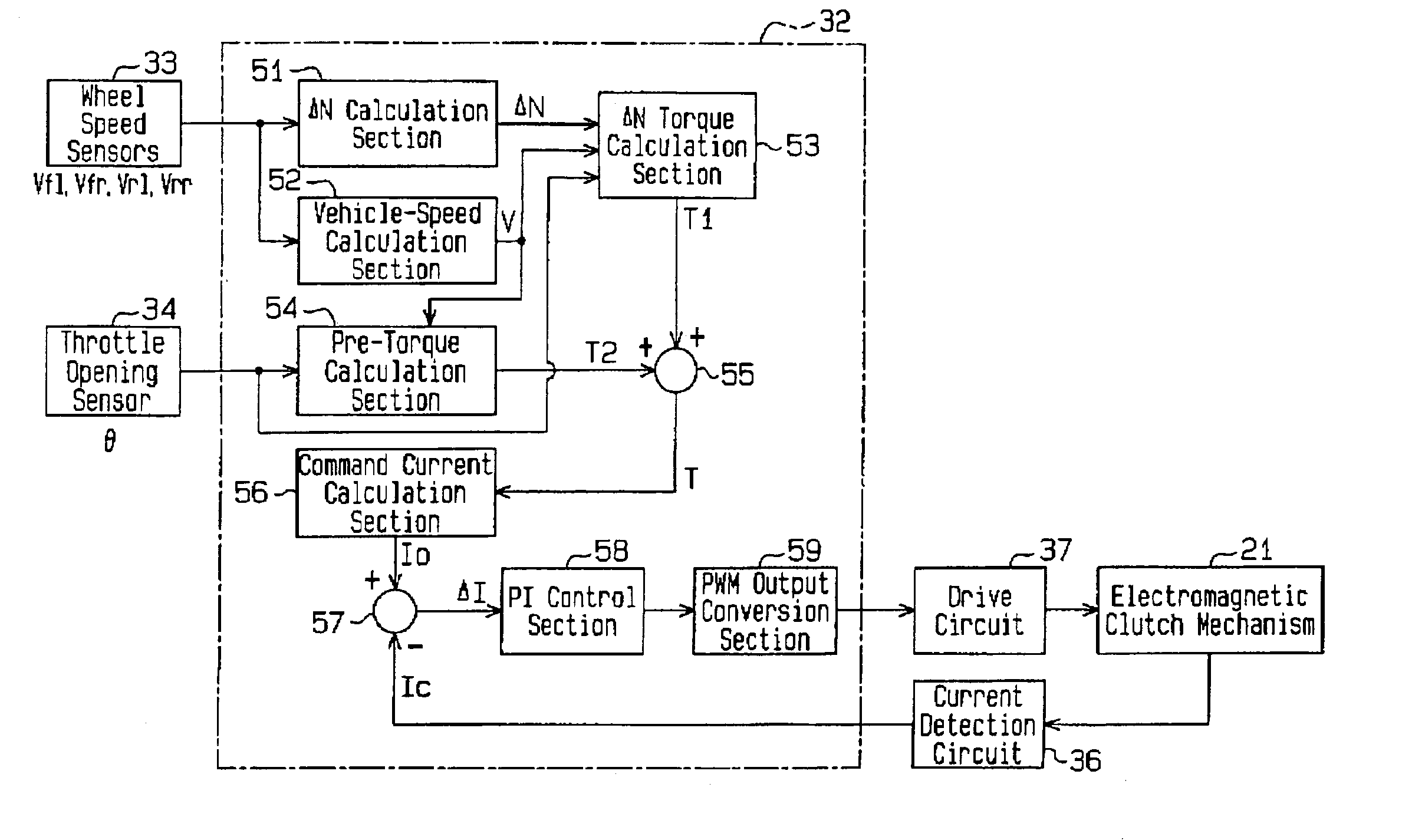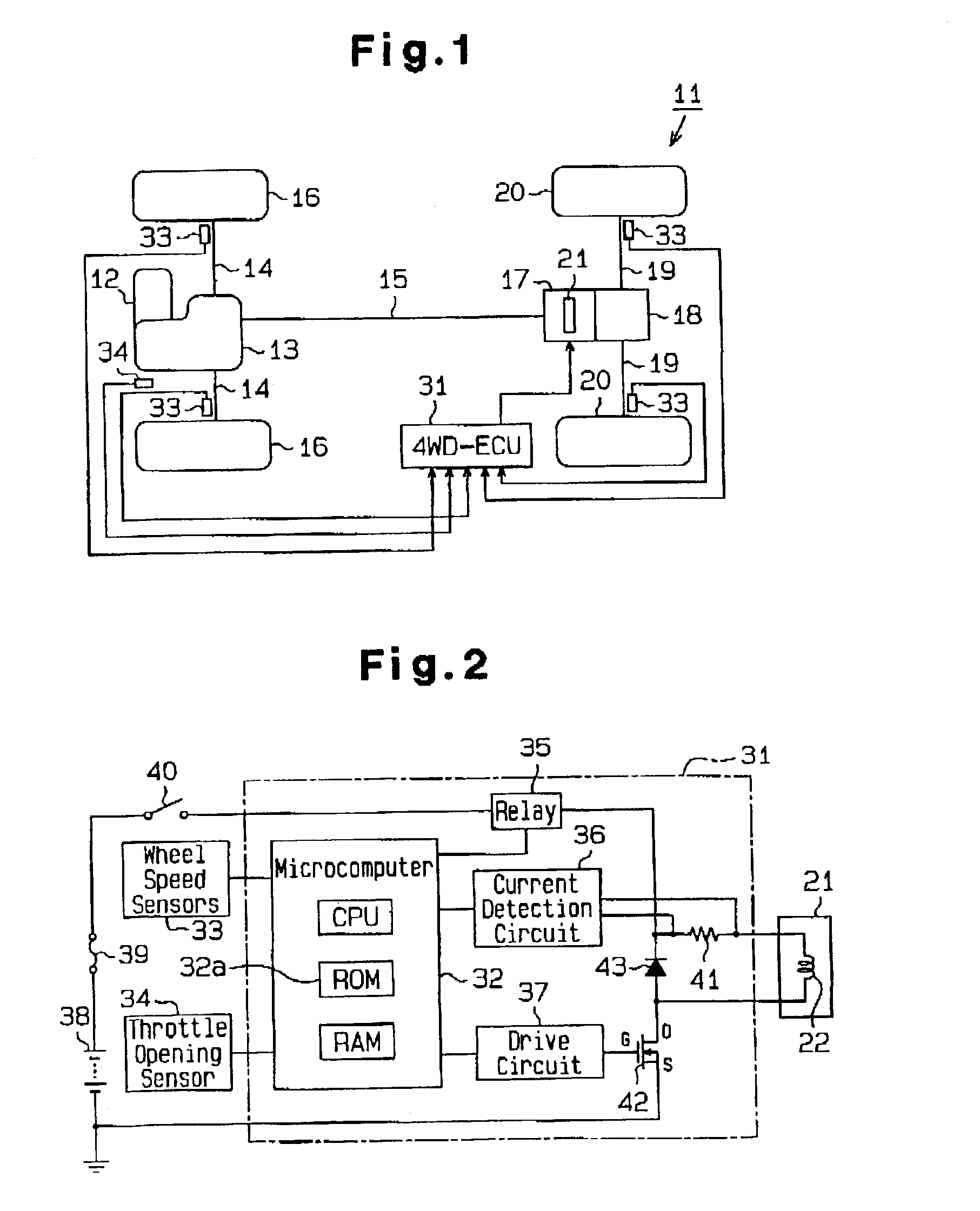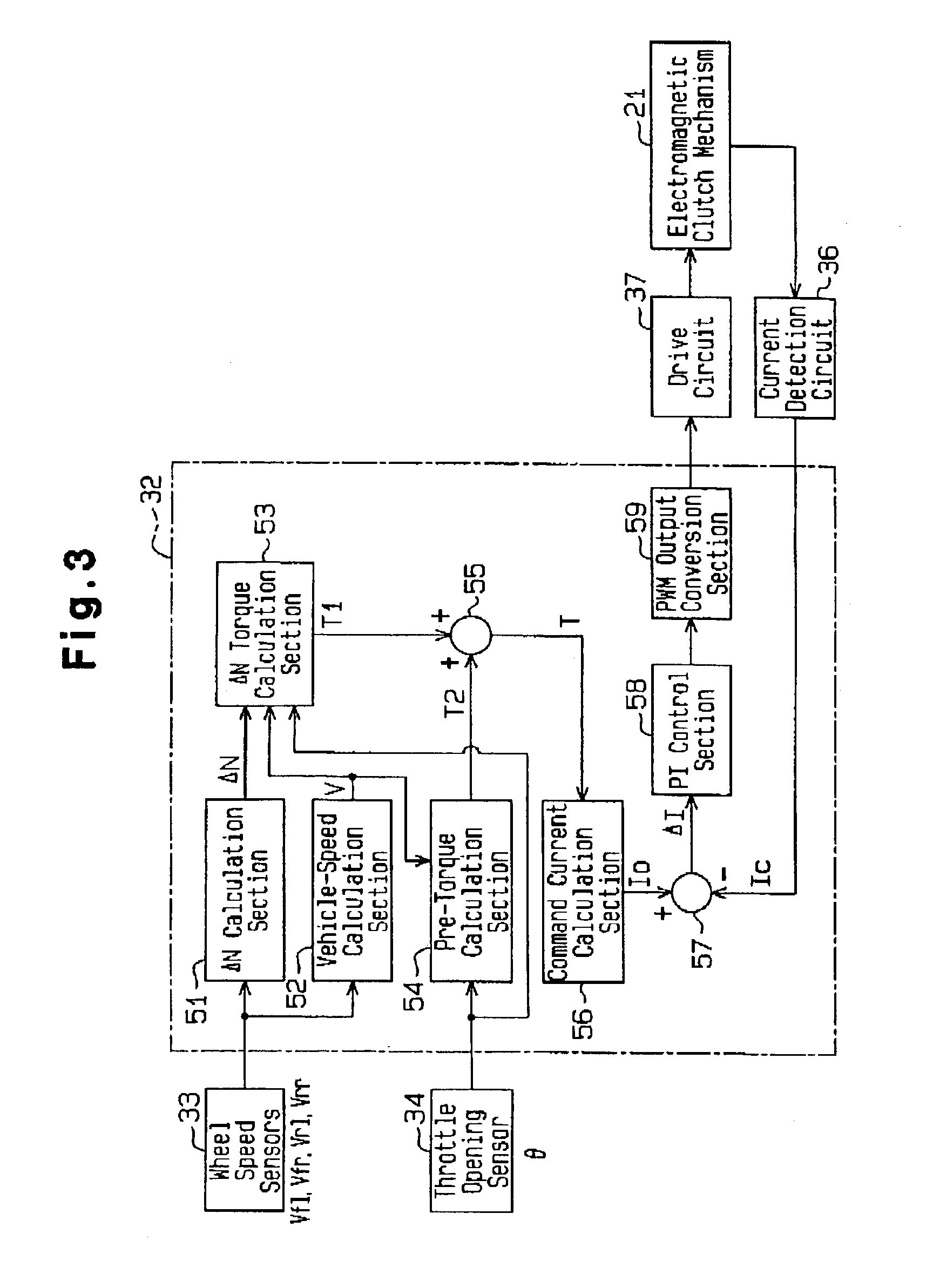Drive-force distribution controller and drive-force distribution method for four-wheel-drive vehicle
a technology of drive-force distribution controller and drive-force distribution method, which is applied in the direction of process control, instruments, machine control, etc., can solve the problems of excessive command torque, inability of conventional drive-force distribution controller to effect drive-force distribution in accordance with traveling conditions, and inability to properly control the torque transmitted to the front or rear wheels during cornering. to achieve the effect of improving both steerability and motion stability of the vehicl
- Summary
- Abstract
- Description
- Claims
- Application Information
AI Technical Summary
Benefits of technology
Problems solved by technology
Method used
Image
Examples
first embodiment
<Overall Structure>
As shown in FIG. 1, a four-wheel-drive vehicle 11 includes an internal combustion engine 12 and a transaxle 13. The transaxle 13 includes a transmission, a transfer, and other necessary components. A pair of front axles 14 and a drive shaft 15 are connected to the transaxle 13. Front wheels 16 are connected to the front axles 14. A drive-force transmission apparatus (coupling) 17 is connected to the drive shaft 15. A rear differential 18 is connected to the drive-force transmission apparatus 17 via an unillustrated drive-pinion shaft. Rear wheels 20 are connected to the rear differential 18 via a pair of rear axles 19.
Driving force or torque output from the engine 12 is transmitted to the front wheels 16 via the transaxle 13 and the front axles 14. When the drive shaft 15 and the drive pinion shaft are coupled to each other by means of the drive-force transmission apparatus 17, the torque output from the engine 12 is transmitted to the rear wheels 20 via the ...
second embodiment
The overall structure of the four-wheel-drive vehicle, the structure of the drive-force transmission apparatus, and the electrical configuration are identical with those in the first embodiment, and therefore their repeated descriptions are omitted.
<Operation of the Second Embodiment>
Various functions of the microcomputer 32 which are realized through execution of the various control programs stored in the ROM 32a will be described with reference to the functional block diagram shown in FIG. 3. Notably, various parameters, such as wheel speeds Vfl, Vfr, Vrl, Vrr, throttle opening θ, and differential rotational speed ΔN, refer to corresponding signals.
The microcomputer 32 performs drive-force distribution control as follows. The wheel speeds Vfl, Vfr, Vrl, and Vrr of the left and right front wheels and the left and right rear wheels detected by the wheel speed sensors 33 are fed to a differential-rotational-speed calculation section (hereinafter referred to as the “ΔN calculatio...
third embodiment
The overall structure of the four-wheel-drive vehicle, the structure of the drive-force transmission apparatus, and the electrical configuration are identical with those in the first embodiment, and therefore, their repeated descriptions are omitted.
<Operation of the Third Embodiment>
Next, various functions of the microcomputer 32 which are realized through execution of the various control programs stored in the ROM 32a will be described with reference to the functional block diagram shown in FIG. 10. Notably, various parameters, such as wheel speeds Vfl, Vfr, Vrl, Vrr, throttle opening θ, and differential rotational speed ΔN, refer to corresponding signals.
The microcomputer 32 performs drive-force distribution control as follows. The wheel speeds Vfl, Vfr, Vrl, and Vrr of the left and right front wheels 16 and the left and right rear wheels 20 detected by the wheel speed sensors 33 are fed to a differential-rotational-speed calculation section (hereinafter referred to as the “...
PUM
 Login to View More
Login to View More Abstract
Description
Claims
Application Information
 Login to View More
Login to View More - R&D
- Intellectual Property
- Life Sciences
- Materials
- Tech Scout
- Unparalleled Data Quality
- Higher Quality Content
- 60% Fewer Hallucinations
Browse by: Latest US Patents, China's latest patents, Technical Efficacy Thesaurus, Application Domain, Technology Topic, Popular Technical Reports.
© 2025 PatSnap. All rights reserved.Legal|Privacy policy|Modern Slavery Act Transparency Statement|Sitemap|About US| Contact US: help@patsnap.com



